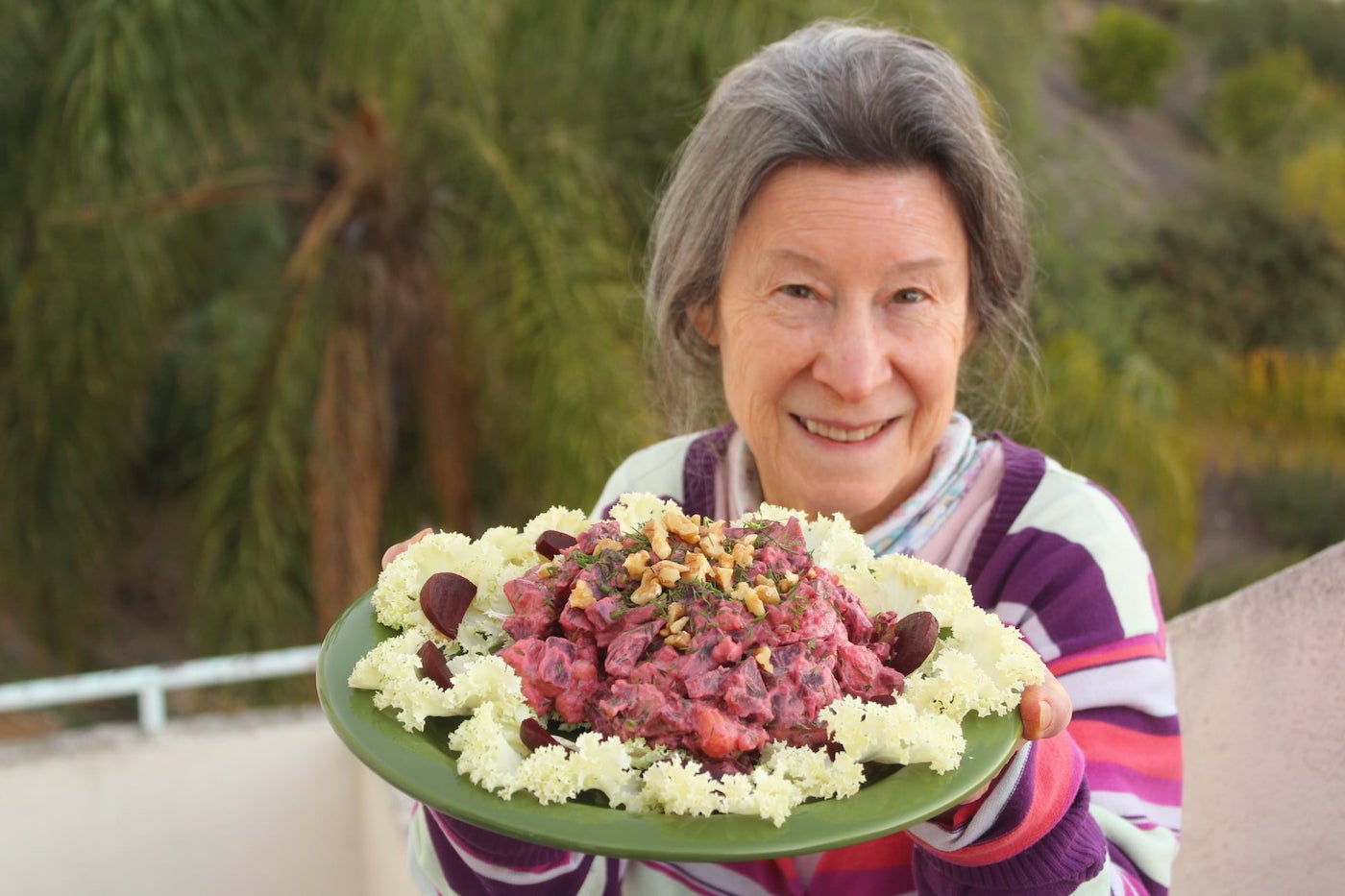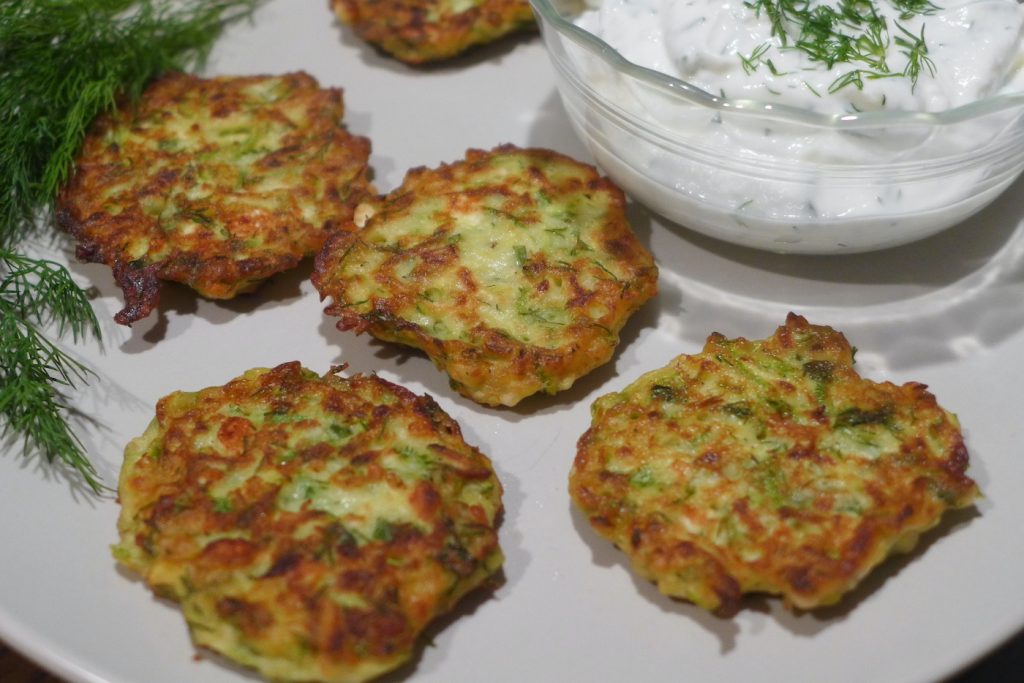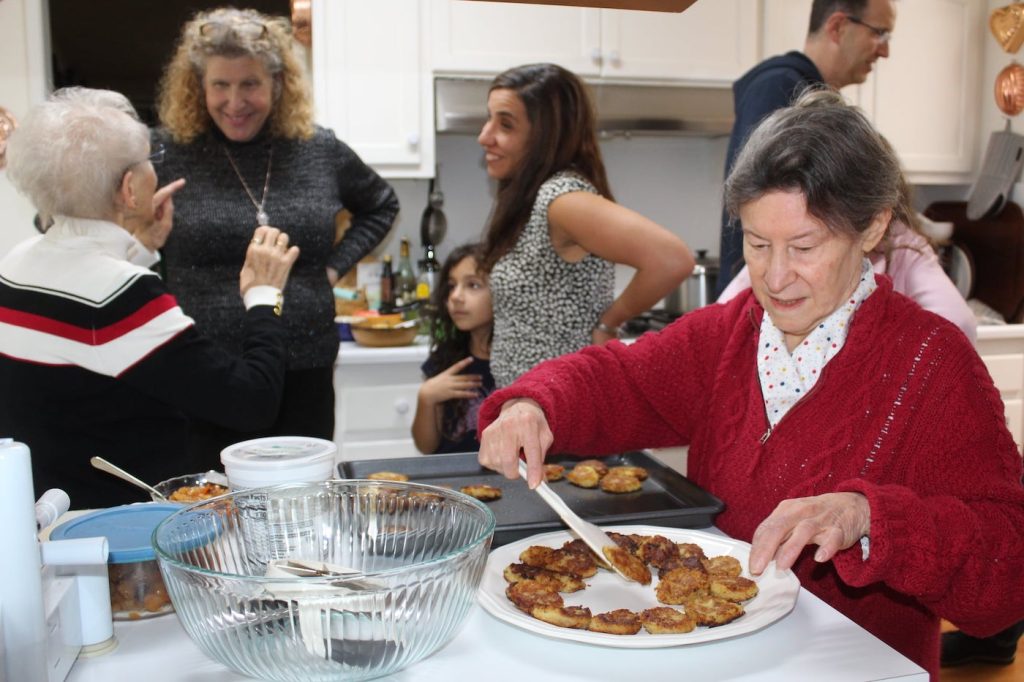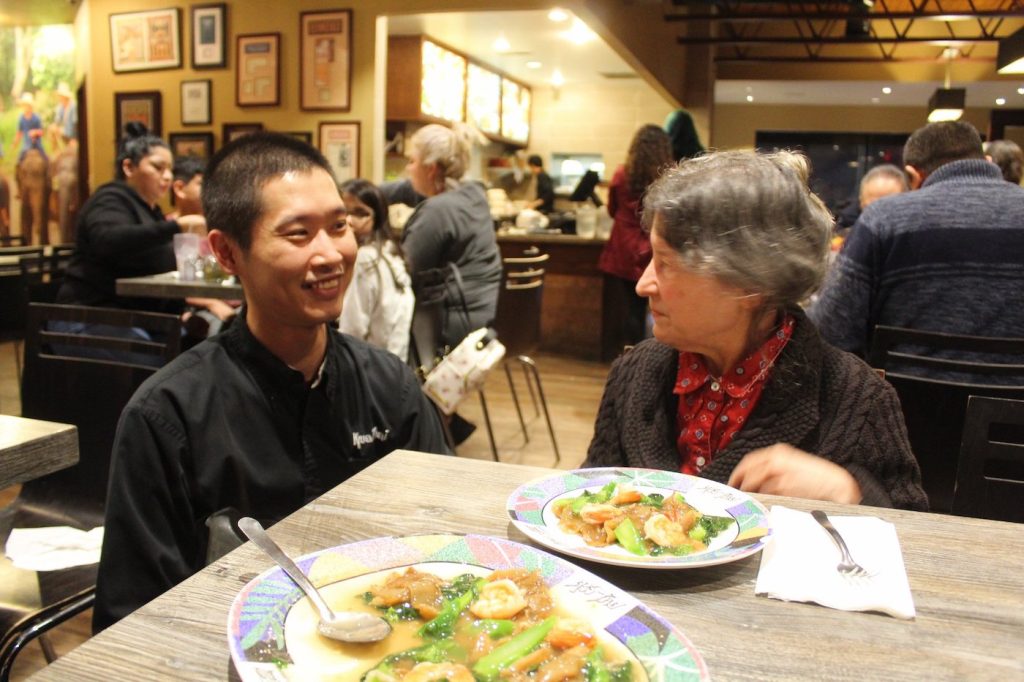Faye Levy on Jewish Cooking: A Diaspora of Flavors

On a recent afternoon I received a random phone call from a senior woman who lived in Hope Ranch. She introduced herself as Vibeke Einhorn. She said she had a box of cookbooks, and that she was moving into an assisted care facility, and would I want them. Her kind, dignified voice and fondness for cooking made me feel as if I would be doing a good deed by helping her find a new home for her cookbooks. So I agreed, and later that day found myself driving over to Hope Ranch to meet her. As I walked toward her front door, movers shuffled past me with objects they were loading into a truck. Ms. Einhorn met me in the entryway and greeted me warmly in a soft, accented voice. “The books are over here,” she said, leading me to the dining room where a large, heavy-seeming cardboard box rested on a table. We spoke briefly but I could see that the moving crews needed her attention. So I thanked her and made my way back home where I slowly began to dissect the box’s contents. Inside were a whole slew of cookbooks in Danish, as were professional culinary selections on desserts and healthy, low-fat meal making. Then I recognized a title that I hadn’t read before: International Jewish Cookbook. I recognized the author’s name, Faye Levy. As I thumbed through the pages my curiosity took me on a culinary adventure.
Faye Levy is a groundbreaking Jewish cookbook author and journalist. The Jerusalem Post columnist – a position she has held since 1990 – is constantly exploring new ways of serving Jewish cuisine. Levy has written 23 cookbooks in English, French, and Hebrew. Her International Vegetable Cookbook (Warner Books, 1993) won a James Beard Award, and she followed up with Feast from the Mideast (Harper Collins, 2003), Healthy Cooking for the Jewish Home (Morrow, 2008), and Jewish Cooking for Dummies (Hungry Minds, 2001). Her International Jewish Cookbook (Time Warner Books, 1991) remains a staple for today’s cooks.
Faye started her culinary career in Israel as the assistant of celebrated cookbook author Ruth Sirkis. Next she enrolled in a six-week course at Ecole de Cuisine La Varenne. She lived in Paris for almost six years, where she enlisted in professional chef’s training and worked as La Varenne’s cookery editor.
She explains that there are two styles of Jewish cooking: Ashkenazic and Sephardic. Ashkenazic comes from Ashkenaz, a former Hebrew name for Germany and refers to the Jews from Eastern and Central Europe, and Sephardic comes from Sepharad, the Hebrew word for Spain, and stands for Jews from the Mediterranean area, Middle East, Western Asia, and North Africa. Within the two designations there are even more cooking
styles and traditions.
Levy – whose food articles have appeared in the Los Angeles Times, Bon Appétit, Gourmet, Chocolatier, Vegetarian Times, and other magazines and major newspapers – finds culinary inspiration in many places.
These days, she continues to expand and share her culinary and cultural knowledge at every opportunity, whether around town or across the globe. I recently caught up with her to discuss Jewish influence on international cuisine.
Q. You’ve written a book called Jewish Cooking for Dummies. I would imagine that there are many aspiring cooks out there who are as intrigued as I am by Jewish culinary traditions, and who want to learn more. One of the most important aspects I’ve learned thus far from your writings is that Jewish cooking is complex; it’s not a cookie cutter meal plan. From a cultural and culinary standpoint, it comprises diverse influences.
So, what was it like for you to discover and learn how to prepare Jewish specialties beyond matzo ball soup, gefilte fish, and blintzes?
A. It was fascinating. I was living in Israel and had never tasted Yemenite-Jewish, Moroccan-Jewish, and other specialties that were not Ashkenazic. My mother-in-law was from Yemen, and I learned how to prepare many delicious dishes from her, like her Shabbat bread that she baked all night, and her spicy beef soup. Other dishes that inspired me were spicy Moroccan fish for Shabbat (that a Moroccan neighbor made) and kubeh soup with okra or with beets, made by my sister-in-law, who is of Iraqi-Indian origin. Burekas – a favorite treat of mine from pastry shops in Israel – is something that I also learned to make at home. And of course, shakshuka, that I first learned to make from my mother-in-law, who also taught me to make a delicious Yemenite flatbread called malawach, which is similar to paratha.
How has the diversity in Jewish cooking influenced your approach to meal making today?
Since Middle Eastern flavors are now popular in Jewish cooking, thanks to people using them in Israel, I enjoy using them in my recipes. In Eastern and Central Europe there weren’t a lot of fresh vegetables available, so Ashkenazi recipes don’t have as many vegetable dishes as Sephardi ones do. Since we have an abundance of fresh produce in California, I enjoy using it in Jewish cooking to make dishes tastier, more beautiful, and more healthful.
How has Jewish cooking evolved over the past 50 years?
If you mean Jewish cooking in the U.S., I think that’s thanks to Jews coming to the U.S. from other countries, especially Israel but also Iran; American Jews, who are primarily Ashkenazic, learned about the flavors of these cuisines.
Seasonings can be used to make dishes more interesting. My mother, whose food was very Ashkenazi, adopted seasonings from my Yemenite mother-in-law and flavored her matzo ball soup with cumin, turmeric, and cilantro.
People who love to cook have also incorporated all sorts of flavors from other cuisines, such as Mexican, into American Jewish cooking. With the availability of a greater variety of produce items, Jewish menus are enriched by them. A Mexican acquaintance told me that his family in Mexico City served chili salsa with gefilte fish. Cilantro is a popular spice in Israel, especially in North African cuisines, but they don’t consider it Mexican; in fact, it originated in the Mediterranean area.
As for Asian ingredients, soy sauce has become a popular ingredient in Israel and is used on Friday night chicken. Ginger and cardamom are used by Yemenites as part of their coffee spice blend, but they don’t consider them “Asian.” Ginger is popular in Moroccan cooking in its dry form and has long been part of the cuisine.
What about kosher cooking?
It seems to me that Jewish food is influenced by the cuisines of whatever country Jews live in. If they adapt a dish, they make it kosher. For example, Alsatian choucroute is traditionally made with a variety of pork products, but the traditional Alsatian Jewish choucroute has goose instead.
Jews in Morocco make couscous with similar spices to other Moroccans except that they don’t add butter to the couscous if they are serving it with meat, and if they use the spice blend called ras el hanout to flavor the meat, they make this blend without an ingredient called Spanish fly, which is not kosher.
How has the availability of new vegan foods helped in Kosher meal making?
Jews who keep kosher have a much wider variety of cheeses and deli meats than before. Thanks to the popularity of vegetarian and vegan food in the U.S., there are many vegan meats and dairy foods that can be used in Jewish menus, making possible much more varied menus than before. When I was growing up in a kosher home, having cheesecake after a meal that had chicken or meat as a main course was unthinkable, but now it’s possible.
For some reason sandwiches like the Reuben sandwich are sold at Jewish delis but are not kosher. With vegan cheeses, such as Daiya, it’s easy to make kosher versions. Those who want to serve eggs and bacon at breakfast can easily do this with vegan products. And of course, there are cheeseburgers – the cheese can be vegan, or the burger, or both.
For some people it would be upsetting to add such items as faux shrimp or faux bacon because they are used to thinking of those foods as non-kosher.
With the holidays upon us, what are you planning for your Hanukkah table?
When I was growing up, my favorite Hanukkah meal was a latke party, and that’s what I still like. My mother made potato pancakes and served them the traditional way, with applesauce and sour cream. It wasn’t really a meal. I like to make several kinds of latkes, such as potato, corn, and zucchini, and to serve them with different toppings. My favorite toppings are yogurt with garlic and dill or other herbs, sautéed mushrooms and sautéed leeks. In Israel the Hanukkah favorite is sufganiyot – doughnuts without holes – and I love those too, and often Hanukkah parties have both potato latkes and sufganiyot. That doesn’t make a very balanced meal, so I add a tray of vegetables and fruits, or a salad.
I like noodle kugel the traditional way. I like matzo balls both traditional and non-traditional. For me it depends on the dish. Sometimes I add a few other ingredients to spice it up; for others I make it the old-fashioned way.

Lentil Latkes with Chard Yogurt Sauce
Yield: Serves 4 to 6
For the yogurt sauce:
1 large bunch chard, about 8 large leaves, stems removed
1 cup whole milk yogurt
2 garlic cloves, minced
1/2 teaspoon salt, or to taste
Semi-hot pepper flakes such as Turkish Maras pepper or Aleppo pepper, optional, for garnish
Directions:
Bring a large pot of water to a boil. Add the chard leaves and blanch just until tender, about 2 minutes. Remove the leaves to an ice bath to chill, then drain and squeeze to remove excess water. Chop the leaves.
In a bowl, whisk together the yogurt, garlic, and salt. Stir in the chard. Taste the sauce and adjust the seasoning if desired. This makes one generous cup of sauce.
For the latkes:
1 cup red lentils, rinsed
2 1/2 cups water
1 cup fine bulgur (bulgur No. 1)
1 cup minced onion
2 garlic cloves, minced
1/3 cup chopped parsley
3/4 teaspoon salt, or to taste
1/4 teaspoon black pepper, or to taste
1/2 teaspoon paprika
1/2 teaspoon semi-hot pepper flakes such as Turkish pepper flakes or Aleppo pepper, or a pinch of cayenne pepper, or to taste, plus more for garnish
1 egg
Olive oil, for frying
Prepared chard yogurt sauce
Directions:
In a saucepan, combine the lentils and the water and bring to a boil, stirring a few times. Partially cover and cook over low heat until the lentils are soft, about 15 minutes, stirring only 2 to 3 times. Remove from heat. Using a slotted spoon, transfer the lentils to a large bowl, leaving the liquid in the pan. Measure cooking liquid – you will need 3/4 cup; add hot water if necessary. Add the bulgur to the liquid and mix well. Transfer the bulgur to the bowl of lentils and mix well. Set aside to cool until lukewarm, about
30 minutes.
Add the onion, garlic, parsley, salt, pepper, paprika, and pepper flakes to the lentil mixture. Mix well. Taste and adjust seasoning, then add the egg and mix well.
To make small latkes, take 1 tablespoon-size spoonfuls and flatten them between your palms to make smooth patties about 1 1/4 to 1 1/2 inches. To make larger latkes, use 2 tablespoons of mixture and flatten to 2-inch patties. Put the patties on a plate.
Heat a thin film of olive oil in a large skillet, preferably nonstick, over medium heat until hot. The oil is hot enough if it sizzles when you touch it with the edge of a patty. Add enough patties to make one layer, allowing room to turn them over. Fry until browned on each side; small ones take 1 1/2 to 2 minutes per side, and larger ones take 3 minutes on the first side, and slightly less on the second side. Transfer to a plate lined with paper towels. Wipe the pan, if necessary, add additional oil, and repeat until all the latkes are fried.
Serve the latkes hot or warm, with chard garlic sauce and garnished, if desired, with pepper flakes.

Bulgur Meatballs (Sephardic)
Yield: Serves 6 to 8
For the tomato pepper sauce:
2 tablespoons olive oil
1 red bell pepper, diced
1 Anaheim chili, seeded and chopped
4 garlic cloves, finely chopped
2 pounds ripe tomatoes, peeled and finely chopped
Salt and freshly ground black pepper
1/2 teaspoon semi-hot red pepper
Directions:
Heat the oil in a wide-bottomed saucepan over medium heat. Add the bell pepper and chili and cook over medium-low heat until softened, about 10 minutes. Stir in the garlic and cook for about 1/2 minute, stirring frequently.
Add the tomatoes and a pinch of salt and cook, covered, for 5 minutes. Uncover and cook, stirring occasionally, until the vegetables are tender, and the sauce has thickened, 15 to 20 minutes. Taste for salt, and season to taste with black and red pepper. This makes a generous pint of sauce. Serve hot, warm or at room temperature.
For the meatballs:
Prepared Tomato Pepper Sauce
2 cups (11 ounces) fine bulgur wheat (bulgur No. 1)
1 cup finely chopped onion
2 garlic cloves, finely chopped
3/4 teaspoon salt, or to taste
1/4 teaspoon black pepper, or to taste
1/2 teaspoon semi-hot red pepper, such as Maras pepper or Aleppo pepper, or to taste
1/4 teaspoon allspice, or to taste
1/2 pound lean or extra-lean ground beef
About 2 1/2 cups plus 1 tablespoon water, divided
About 3/4 cup olive oil, for sautéing
1 teaspoon semi-hot red pepper flakes such as Turkish Maras pepper or Aleppo pepper, for finishing
Italian parsley in small sprigs, for serving

Directions:
In a food processor, combine the bulgur, onion, garlic, salt, black pepper, red pepper, and allspice and process briefly to blend. Add the ground meat in 4 portions and process briefly to mix. Add 2 cups of water in 4 additions, processing to blend after each addition. Scrape down mixture. Add 6 tablespoons of water, 2 tablespoons at a time, and process after each addition. The mixture should be sticky. Process the mixture until smooth, 2 to 3 minutes.
Transfer the mixture to a bowl and knead until it is very smooth, adding the last 3 tablespoons of water. Check that the mixture is evenly moistened. This makes about 1 quart mix.
Make a test meatball: Take about 1 teaspoon of the mixture and roll it into a ball. Fry the meatball in a small skillet heated with a thin layer of oil until the meatball is cooked through, about 2 minutes. Taste and adjust the seasoning if desired, then test again until the flavors are right.
Moisten your hands and roll the mixture into small meatballs, using a rounded teaspoon of mixture for each one. Set them on a plate.
Prepare a steamer and make sure the boiling water doesn’t touch the steamer top. Add 1/3 of the bulgur meatballs, or enough to make one layer, to the steamer top. (They expand a little while steaming.) Cover and steam over medium heat for 18 to 20 minutes or until they are cooked through. Refrigerate the rest of the mixture until all of the meatballs are steamed.
Heat 3 tablespoons of olive oil in a large skillet over medium heat until hot. Add about 1/4 of the bulgur meatballs and sauté until lightly browned, about 3 minutes per side; shake the pan to turn the meatballs over, or use a slotted spoon. Just before removing them from the pan, add 1/4 teaspoon pepper flakes and sauté for a few seconds. Transfer the meatballs to a plate. Wipe the pan, if necessary, add more oil and repeat until all the meatballs are cooked.
Serve the meatballs on a platter garnished with parsley sprigs. Serve the sauce separately.







You must be logged in to post a comment.